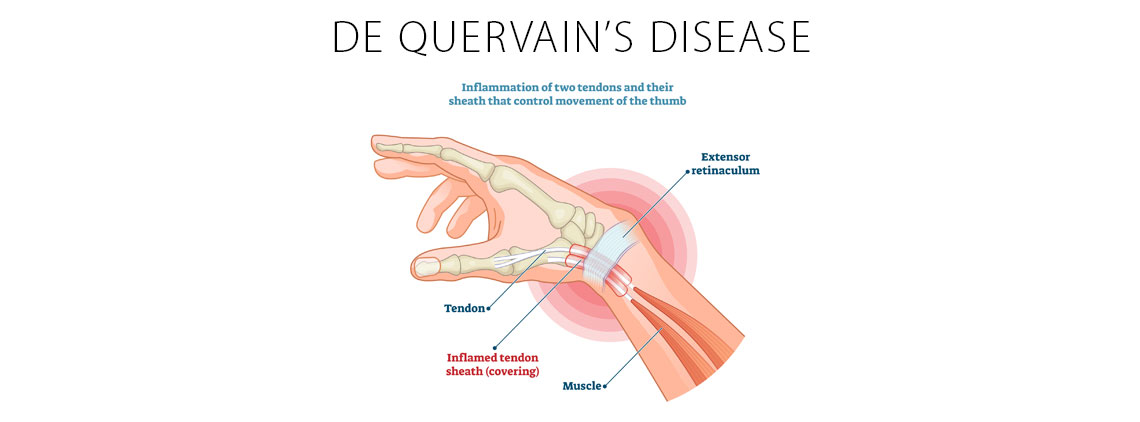
Overview
When the tendons around the base of the thumb are irritated or constricted, it’s called De Quervain’s Disease. This causes swelling in your tendons and swelling in the tendon sheath which inadvertently causes pain and swelling which can be felt on the thumb side of the wrist. You might experience these symptoms the most when you form a fist or grab something. There are two main tendons located on the thumb side of your wrist. We can thank the tendons for attaching our muscles to the appropriate bones. Our tendons are covered in a soft, slippery tissue called synovium. The synovium allows our tendons to slide easily through the fibrous tunnel called a sheath. When there’s any swelling in the tendons or the sheath, this causes more friction and pain for the wrist and thumb.
De Quervain’s Disease is most commonly found in women due to the overuse of their thumb, pregnancy, or rheumatoid disease. Some of the symptoms are:
- Pain. The pain may be gradual or sudden beginning at the wrist and travelling up the forearm. Increased pain occurs when the hand and thumb are in use.
- Swelling. You may notice swelling over the thumb side of your wrist. You may also have a cyst filled with fluid on your wrist as well. This is a ganglion cyst.
- Snapping Sensation.. Some patients report a snapping sensation when they move their thumb.
- StiffnessDifficulty moving due to pain and swelling.
Nonsurgical Treatment Options for De Quervain’s Disease
There are several treatment options for De Quervain’s Disease:
- Splint/Brace. A splint or brace can be worn during activities to minimize strain on your wrist.
- Anti-Inflammatory Medication. Through the use of anti-inflammatories like ibuprofen and naproxen you can reduce swelling and relieve your pain.
- Activity Modification.By modifying a way you use your wrist and thumb or avoiding the movement all together you may be able to allow the symptoms to go away on their own.
- Steroid Injection. A stronger anti-inflammatory, like a corticosteroid, to be injected directly into the wrist in order to reduce swelling and pain.
- Steroid Injection. A stronger anti-inflammatory injection reduces inflammation and pain, but the effects are only temporary.

